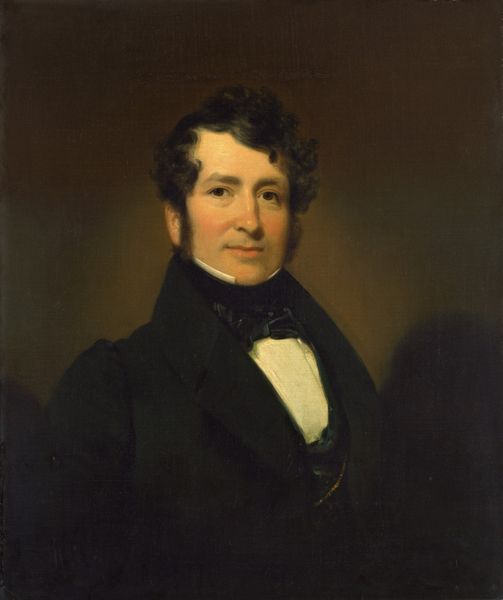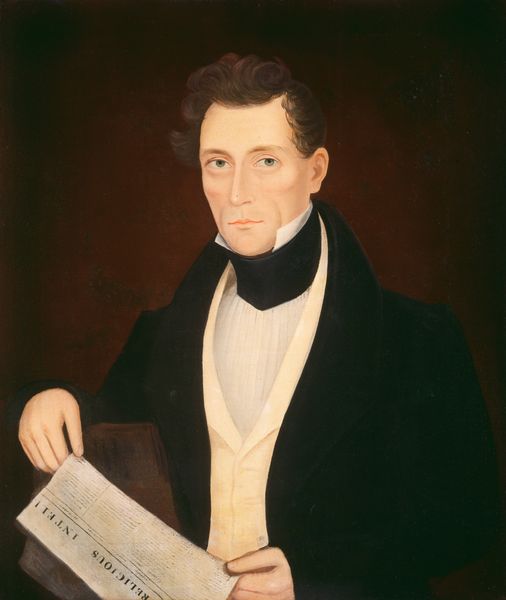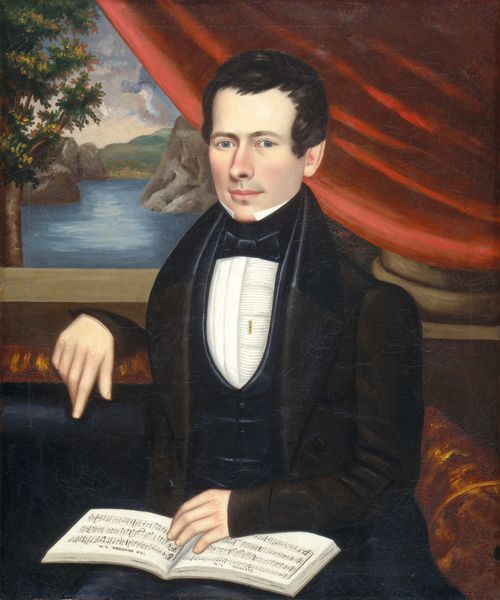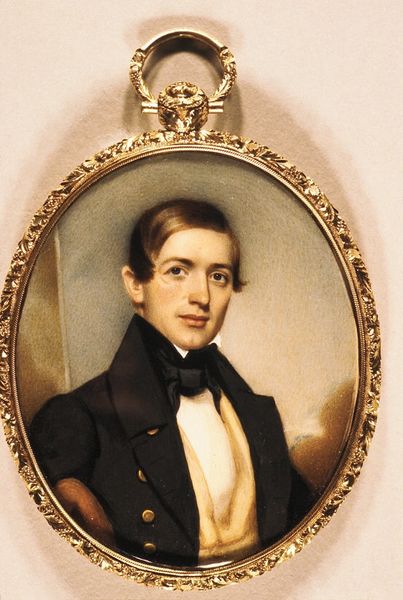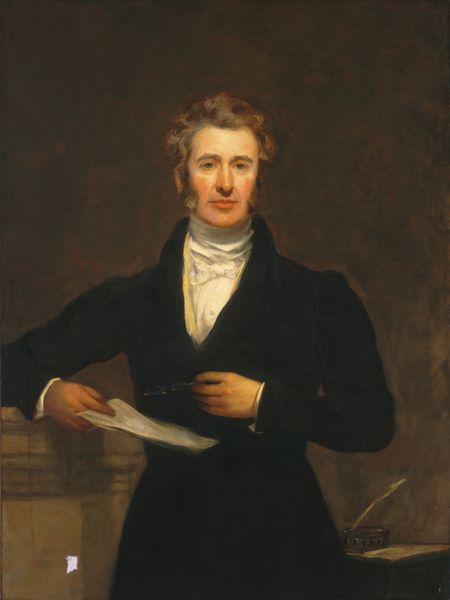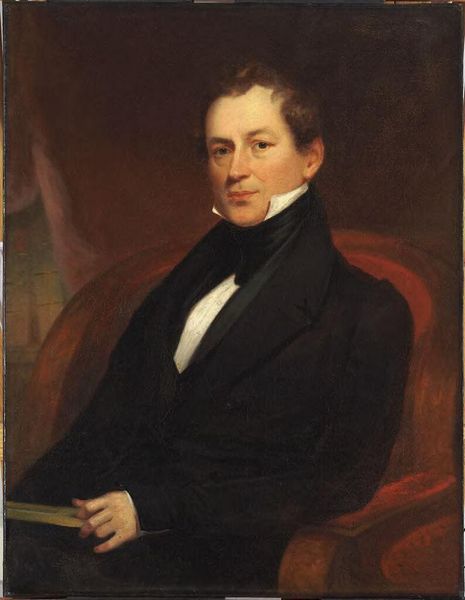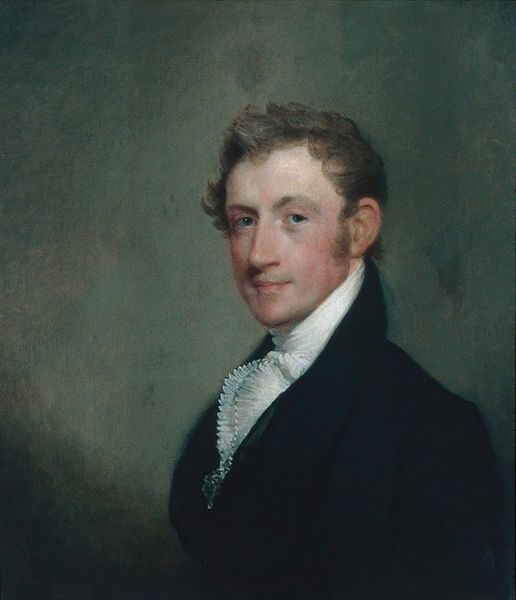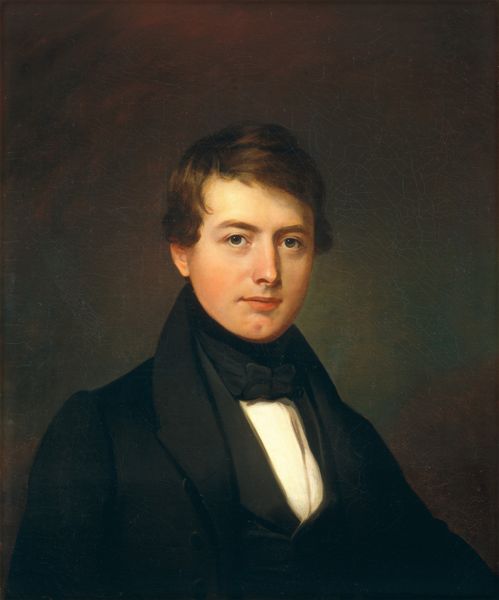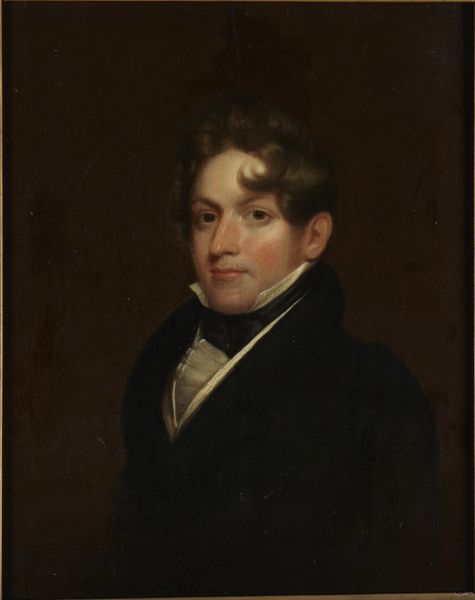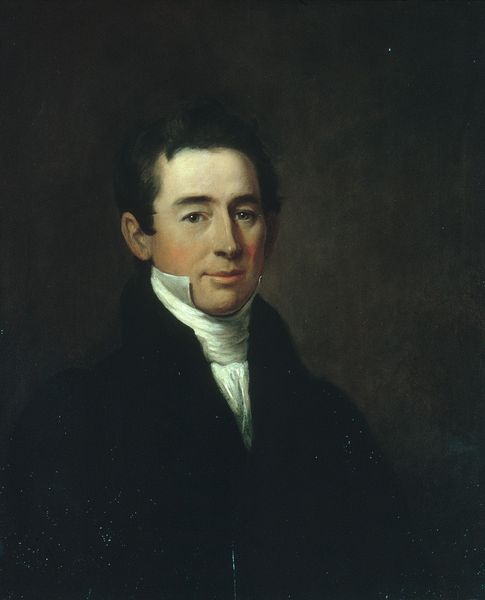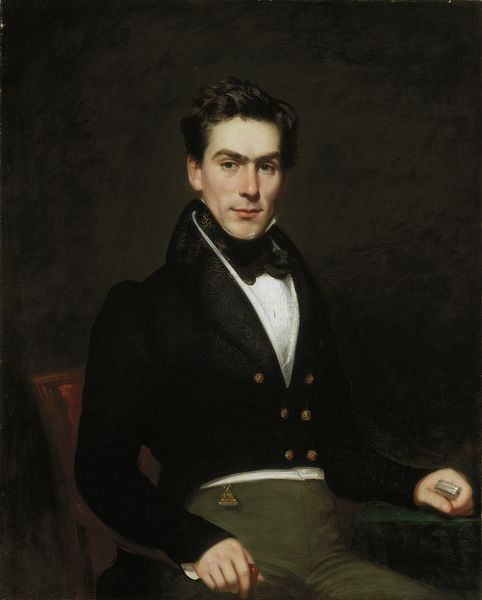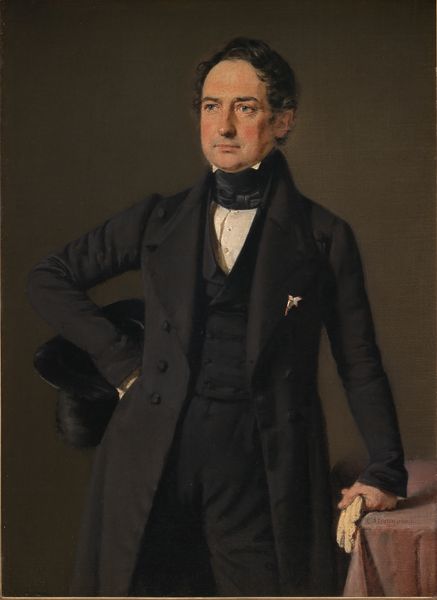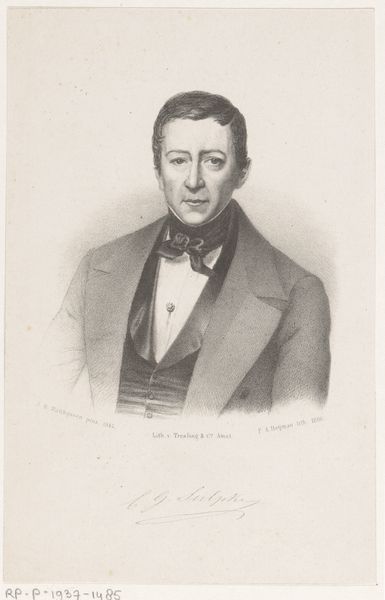
painting, oil-paint
#
portrait
#
painting
#
oil-paint
#
romanticism
#
men
#
portrait drawing
#
academic-art
Dimensions: 48 1/8 x 24 1/2 in. (122.2 x 62.2 cm)
Copyright: Public Domain
Editor: This is Nelson Cook's "James Merrill Cook," painted in 1840. It's an oil portrait and the gentleman depicted has an almost stern, imposing air. I'm curious, what do you see in this piece beyond a formal portrait? Curator: What strikes me is how this portrait encapsulates the performance of masculinity during the Jacksonian era. Consider the sharp tailoring, the deliberate pose – they all signal a man in control, ascending in a society that prized self-made men. But who gets to perform this ideal? Editor: You mean, considering this in terms of identity? Curator: Precisely. Look at the column fragment behind him – a symbol of classical virtue, typically reserved for portraits of elites. By including it, Cook is subtly aligning his subject with established power structures. We need to ask: who had access to those structures, and whose stories were deliberately excluded from this narrative of American success? What did success look like for women at the time? How did enslaved people, who built the economy for men such as the one portrayed in the painting, view success and power? Editor: That really shifts my perspective. It's not just a picture of a man, but an embodiment of social power and its inherent inequalities. Curator: And consider the Romanticist style. There is something powerful in how Cook employs techniques from that period in ways that advance discussions on social themes such as gender and race, making the artist, by association, socially engaged. How does it change the dialogue when these issues come to bear on the composition itself? Editor: I hadn't considered the artist's hand in reinforcing those ideologies through composition. Curator: Exactly. Portraits are never neutral. They’re always carefully constructed arguments about who deserves to be remembered and how. We can analyze this in the context of the philosophical ideas around the gaze. Editor: That's given me a lot to think about regarding how we view historical figures and the systems they represent. Thank you for showing me this painting from an intersectional perspective.
Comments
No comments
Be the first to comment and join the conversation on the ultimate creative platform.
